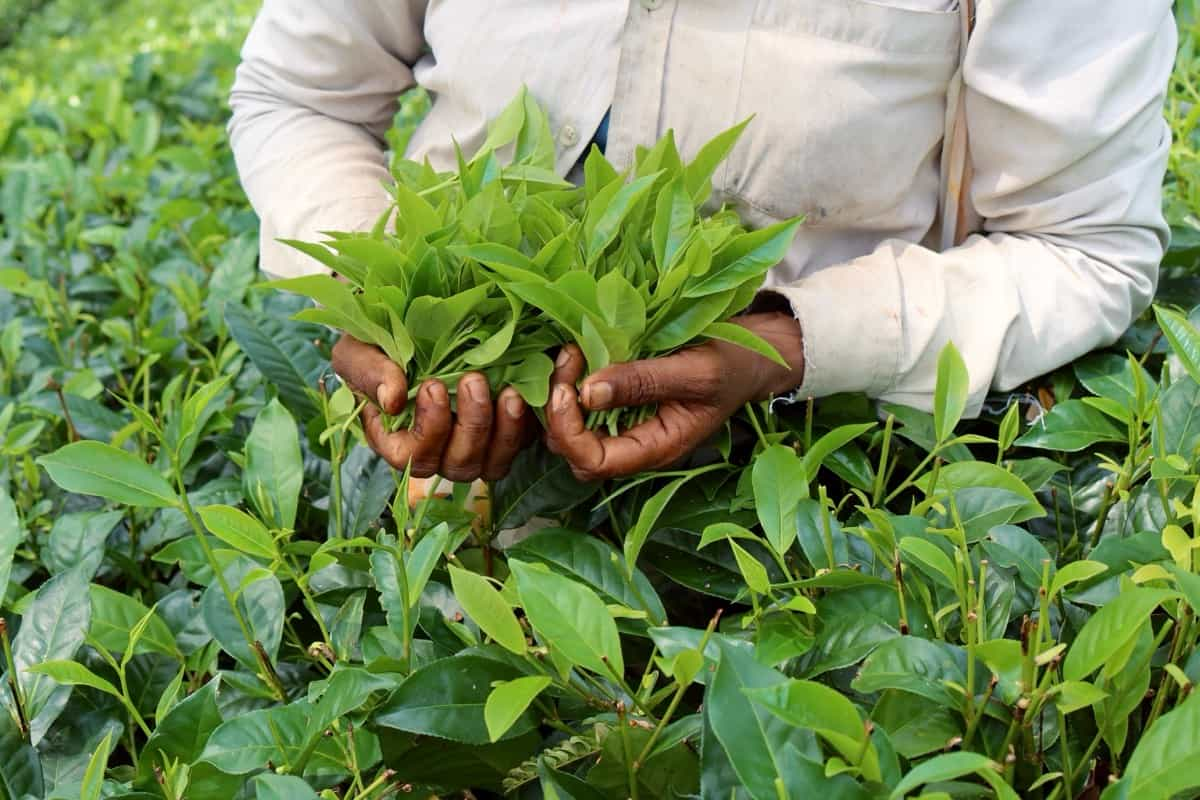Cash crops play a pivotal role in global agriculture, contributing significantly to the economies of many countries. A cash crop, essentially, is a crop grown for direct sale rather than for use by the farmer. This includes a wide range of best cash crop options across the world, each tailored to specific regional climates and market demands.
While some crops are primarily grown for their direct financial value, others may serve dual purposes as both cash crops and food crops. In this article, we explore various examples of cash crops that have established themselves as some of the most profitable farming crops globally, focusing on their cultivation in different regions.
Top High-Profit Cash Crops
Understanding the Market for High-Profit Cash Crops
Various factors, including consumer demand, international trade policies, and technological advancements in agriculture, influence the market dynamics for high-profit cash crops. Understanding these markets is crucial for farmers and investors looking to capitalize on the most profitable farming crops. Factors such as climate change, evolving consumer preferences, and economic shifts play a significant role in shaping the market for cash crops. Hence, farmers need to be agile and well-informed to make the most of these opportunities.
Factors Influencing the Profitability of Cash Crops
The profitability of cash crops is contingent on several factors, including climate, soil quality, demand, and access to markets. Innovations in agricultural practices and sustainability also impact the success of these crops. Additionally, government policies and international trade agreements can either enhance or hinder the profitability of cash crops. Understanding these variables is crucial for farmers to maximize their returns and ensure the long-term sustainability of their farming practices.
Top High-Profit Cash Crops in North America
In North America, the agriculture sector has a diverse range of high-profit cash crops. These include traditional staples like corn and soybeans, which are central to the continent’s agricultural output. However, newer and more specialized crops like blueberries, almonds, and avocados have also emerged as lucrative options. These crops have adapted well to the varied climates across North America, from the temperate zones to the warmer southern regions, offering farmers a wide array of profitable farming opportunities.
In case you missed it: American Buff Goose: Origin, Characteristics, Lifespan, Price, Egg Production, Size, Pros, and Cons

High-Profit Cash Crops in Europe: A Comprehensive List
Europe’s agriculture is characterized by a variety of high-profit cash crops tailored to its unique climatic and soil conditions. Crops like olives, grapes, and various types of berries have long been staples in European agriculture. Additionally, there is a growing trend in cultivating specialty crops like lavender and truffles, which cater to niche markets and offer high returns. These crops not only contribute significantly to the agricultural economy of Europe but also play a crucial role in sustaining the rural economies.
In case you missed it: 10 Easy Steps to Growing Seedless Grapes

Exploring High-Profit Cash Crops in Asia
Asia’s diverse climates and vast landmass make it an ideal region for a variety of cash crops. Rice, although primarily a staple food crop, also serves as a significant cash crop in many Asian countries. Other prominent cash crops include tea, rubber, and spices like pepper and cardamom. These crops have not only shaped the agricultural landscape of Asia but also have a profound impact on the global markets, showcasing the region’s capacity to produce high-profit cash crops.
In case you missed it: How to Grow Your Own Tea Herbs at Home: A Step-by-Step Guide

Sustainable and Environmentally Friendly High-Profit Cash Crops
The growing global emphasis on sustainability has led to a renewed focus on environmentally friendly cash crops. These include organic versions of traditional cash crops, as well as innovative farming practices that minimize environmental impact. Crops like bamboo, hemp, and organic cotton are gaining popularity as sustainable alternatives that offer economic viability while ensuring environmental conservation. The future of cash crop farming increasingly lies in balancing profitability with ecological responsibility, a trend that is shaping agricultural practices worldwide.
Emerging Trends in High-Profit Cash Crops
The agricultural landscape is witnessing a shift with emerging trends in high-profit cash crops. Technological progress, shifting consumer tastes, and an increased emphasis on sustainability are the driving forces behind these trends. Emerging crops like quinoa and chia seeds are gaining popularity because of their health advantages, appealing to the wellness market. Vertical farming and hydroponics are also gaining traction, enabling the cultivation of high-profit cash crops in non-traditional farming environments.
In case you missed it: 1-Acre Project Report of Quinoa Farming: Production Economics, Cost, and Profit Analysis

These innovative methods are not only space-efficient but also reduce water usage, contributing to sustainable agriculture practices. Furthermore, the demand for biofuel crops is on the rise, reflecting a shift towards renewable energy sources. This trend is opening new avenues for farmers to diversify into crops like switchgrass and jatropha, which are used in biofuel production.
Challenges and Opportunities in High-Profit Cash Crop Farming
High-profit cash crop farming presents a unique set of challenges and opportunities. On the one hand, farmers face obstacles such as climate change, soil degradation, and market volatility, which can impact crop yields and profitability. Pests and diseases also pose significant threats to cash crop production. On the other hand, there are opportunities in the form of technological innovations like precision agriculture, which enhances crop management and efficiency.
The increasing global population and rising demand for food and biofuels also present substantial market opportunities for cash crop farmers. Additionally, the growing trend towards organic and sustainably grown products offers new markets for farmers willing to adopt these practices. Navigating these challenges and capitalizing on the opportunities requires adaptability and a forward-thinking approach from farmers and agricultural stakeholders.
The Future of High-Profit Cash Crops: Innovations and Prospects
The future of high-profit cash crops is promising, with innovations and prospects that could redefine traditional farming. Technological advancements such as AI-driven farm management systems, drone technology, and genetically modified crops are set to enhance productivity and sustainability in cash crop farming. These technologies can help optimize resource use, improve crop resistance to pests and diseases, and increase yields.
The integration of digital technologies in agriculture is also creating more informed and efficient farming practices. Furthermore, there is a growing emphasis on sustainable and climate-smart agriculture, which is likely to shape the future of cash crop farming. This involves adopting practices that are not only economically profitable but also environmentally sustainable and socially equitable. With the global focus on food security and sustainable development, high-profit cash crops will continue to evolve, offering new opportunities for innovation in the agricultural sector.
Conclusion
The world of high-profit cash crops is a dynamic and ever-evolving sector deeply intertwined with global economic, environmental, and social trends. As we have seen, different regions of the world offer a diverse array of profitable crops shaped by their unique climates and market demands.
The challenges faced in cash crop farming, ranging from environmental concerns to market fluctuations, are as significant as the opportunities presented by technological advancements and changing consumer preferences. The future of cash crops looks promising, with sustainability and innovation at its core. Embracing these changes and adapting to new farming practices and market trends is crucial for the continued success and growth of the cash crop industry.
- Feed Your Flock for Less: Top 10 Tips to Save on Chicken Feed
- Ultimate Guide to Ossabaw Island Hog: Breeding, Raising, Diet, and Care
- Hatching Answers: The Top 10 Reasons Your Chickens Aren’t Laying Eggs
- Eggs and Economics: Breaking Down the Cost of Raising Backyard Chickens
- Defend Your Greens: Proven Methods to Keep Iguanas Out of Your Garden
- Ultimate Guide to Cinnamon Queen Chicken: A Comprehensive Guide for Beginners
- Ultimate Guide to California Tan Chicken: Breeding, Raising, Diet, Egg-Production and Care
- Ultimate Guide to Marsh Daisy Chicken: Breeding, Raising, Diet, and Care
- 10 Types of Chicken Farming Businesses You Can Start for Profits